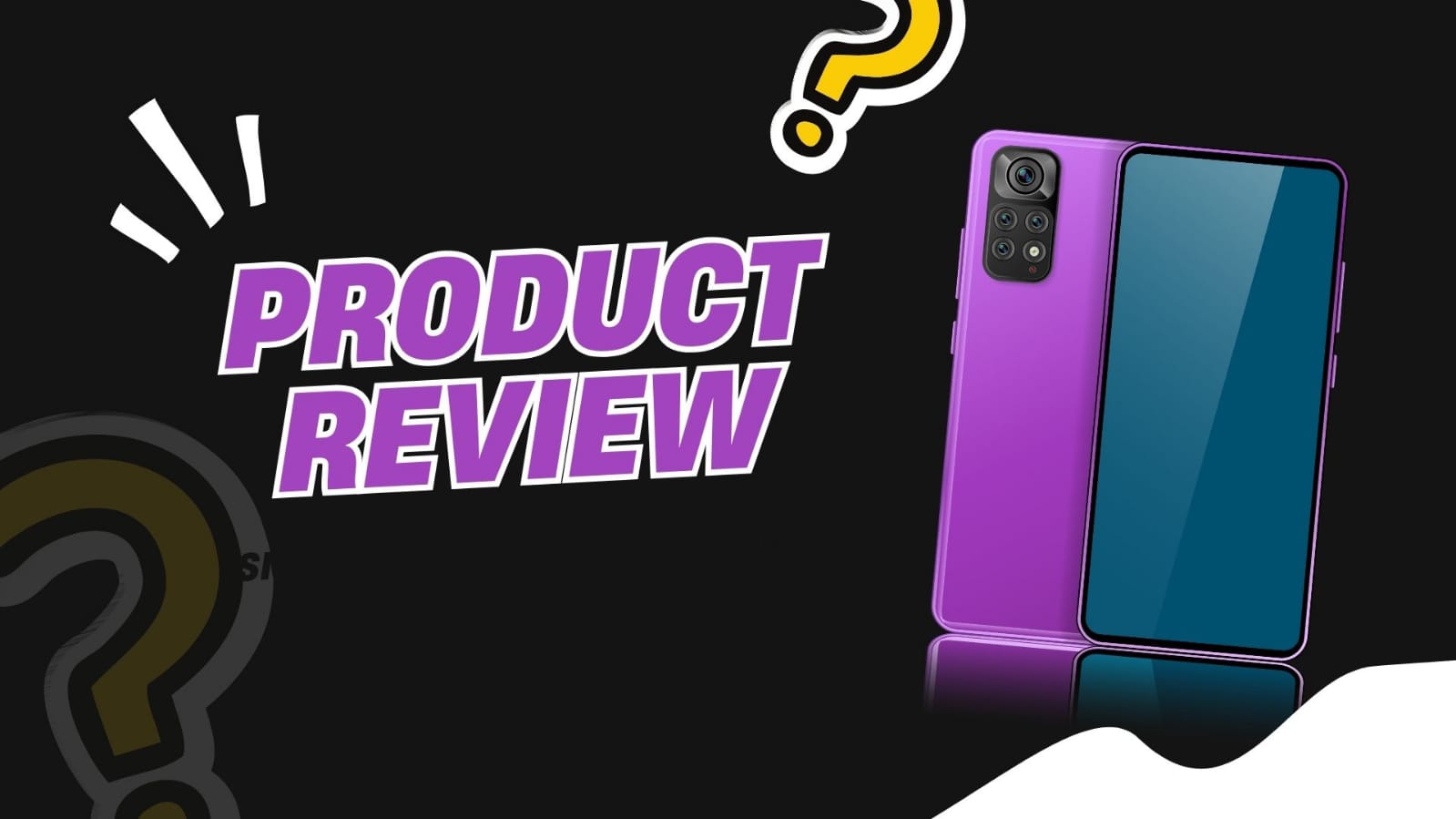So today we have the new Motorola Edge 50 Pro in the house, and the question that has to be asked is, Does this Pantone really improve the camera? So we have used the Moto H50 Pro for 2–3 days now, and we have lots of interesting things to show. Let’s go. But before we begin, guess what you get in the box
? When you open the box, the first thing that you get is fragrance. I think because of the cardboard and all the eco-friendly materials. And then you get the phone, a case, some paperwork, one 25W fast charger, a type-to die-sheet cable, and a SIM ejector tool. Everything you need is inside the box in an eco-friendly way. The fruit company should take notes from this unboxing. Now, before we get to the main highlight camera, there are three interesting things to talk about about this phone. Starting off with the build and design, the moment you pick up the phone, the silicon vegan leather finish, the metal frame, the way it feels lighter, plus this lavender color here, adds that freshness to the overall look and feel of the phone. Credit is due. I feel that over the years, Motorola has gotten better with the design and looks of their phones. A couple of years ago, the phones were bulky, but now they look and feel really premium. In terms of display, you get a very curved display here; it has 2000 nits of peak brightness, and in our testing, we got almost 2000 nits. I was watching the Bard or Blood series on Netflix and saw that the colors are very vibrant, the brightness and sharpness look good, and I enjoyed watching the series. I recommend it.
And these days, Delhi heat is back, so my test has been: can you view the display outside in harsh sunlight? As you can see, it is pretty fine and visible. Also, you get an in-display fingerprint scanner, which is fast. The speakers on this phone are surprisingly very loud, like Listen, and the bass is really good. We also found an interesting thing here: if you swipe down here, you see Dolby Atmos, and now you get two options: spatial audio and smart audio. So while watching content with earphones on, if I turn on spatial audio, the audio sounds as if you’re watching the content in a big cinema hall. The Motorola H50 Pro comes with the latest Android 14 out of the box, running on the new Hello UI instead of my UX. The software here, being stock Android, feels very minimal and vibrant at the same time. If you see this booting animation, it looks very interesting. The settings page with new fonts also looks minimal, and there are a couple of new features here, like A and C in wallpapers. You get this style sync option with AI-generative theming, which can generate wallpaper from the outfit you’re wearing.
So I’m selecting this photo, and based on the outfit, it suggests something like 3–4 wallpapers with different patterns in the outfit color. Also, now in the home and lock screen settings, you get the option of changing the look of the control center, and now it feels very similar to some other UI, but I find this implementation to be the best as it adapts to Android’s Material U. And here’s a really cool feature called Quick Launch. So now I can go to settings and set an action, like selecting YouTube. And now, if I double tap on the back of the phone, the YouTube app opens. So handy. And in terms of software updates, you get 3 years of Android updates and 4 years of security updates. Now we’ll come to the whole update situation at the end of the video. In terms of performance, you get the all-new Snapdragon 7th Gen 3 processor here. 12GB RAM, 250GB storage. Now you’ll be like, What is this Snapdragon 7th Gen 3? Is it an upgrade from the 7th Gen 2 or the 7th Plus Gen 2 or some other chip? So in simple words, the 7th Gen 3 is an upgrade over the 7th Gen 1 chip. We ran the N2-2 benchmark here, which gives an overall score to the phone’s CPU, RAM, etc., and it scored somewhere around 8.5 lakhs or 8.4 lakhs. We also ran the CPU throttling test, and the graph here is mostly green, so it can handle heat and stress. But enough of this benchmarking stuff; how does it perform in real-life day-to-day performance? So we recently did a Techwizr logo design contest on Twitter with the hashtag LogowaliHoli, and there were a lot of entries. So I was on a video call with Shobik on WhatsApp and opened up Twitter and Slack in split-screen shortlisting the winning logo, and this whole task process is actually quite heavy, like there are three apps running at the same time, and it was able to handle it without any issues. We also played games like COD Warzone, which can run in high graphic settings at 60 fps, and the gameplay was smooth, but after playing for like 40 minutes, the phone did get warm, which is pretty normal, and also because the COD Warzone game is not optimized enough yet we also played Call of Duty in high graphics.

I was getting around 120 fps, there was no heating, and the gameplay was pretty smooth. Finally, the cameras. You get a 50-megapixel Pantone-validated main camera with OIS, a 13-megapixel ultra-wide-angle camera, which is also a macro camera, and a 10-megapixel 3x telephoto camera with a 30x hybrid zoom. What is this Pantone-validated, and how exactly will it work on a camera? So, in simple words, Pantone is a very big library of colors, and here in the camera, it will try to keep the colors and skin tone as they are in real life while clicking the picture. In very, very simple words, natural colors. But that is theory. How are photos in real life? How are photos taken in outdoor conditions? Well, in daylight, the camera takes good pictures, and the photos have good colors. If you see this image, it’s looking very good, and if you see my skin tone, it looks exactly the way it was in real life. And if you zoom in a bit, you can see the pictures are sharp and have a good amount of detail. Also, if you see in this image, the color of the sky looks exactly like it did in real life, and the skin tone is also pretty accurate. Even in low-light pictures at night, it does a good job; the light control colors and the skin tones are right; there’s no noise in the photo. Even in this photo, if you zoom in a bit, the logo is visible, and the photo is sharp. In videos, you can shoot in 4K at 30 fps, and while the video looks good, if you notice, there is a bit of frame drop. Then again, we turned on the AI’s adaptive stabilization. The stabilization is okay. However, we observed that the focus on the flowers coming in the way is pretty fast. And not just that, you can also shoot videos in HDR 10+.
Also on the front, you get a 50MP autofocus selfie camera, and I can tap at places and focus here and there. Plus, in 2024, finally, 4K video recording is much appreciated, and indoors and outdoors, the selfies look good. So overall, for first impressions, it feels like the colors are closer to natural, especially the skin tone, which is very close to natural, so that Pantone thing is working for them. Now, before you get to the conclusion, you get a 4500mAh battery. In my short usage, on a single charge, while playing games for longer times and clicking pictures and all of that, it easily lasted me one full day, with about 20–30% battery still left. And to top it off, you get a 125W fast charger, so it can do 100% in about 20 minutes. And you also get 50W of fast wireless turbo charging. In fact, there’s also IP68 water resistance. It’s good to see that those premium features that are present on H40 are still here. So what’s the conclusion here? Did Motorola get it right this time? I would say, for the most part, yes. Like this time, they have improved the camera quite a lot. The colors are very good. It can shoot 4K videos from front and back. Has a very good display and speakers. The software, from a visual aspect, has become even better with the Hello UI. And the overall build, look, and feel are also good. but the biggest thing here to look out for would be software updates. Because in this aspect, as you can see, there are some Motorola phones that still haven’t received the Android 14 update that was promised. I think the hardware of the phone is really good. I hope the update situation improves with this Motorola H50 Pro. Now, the 8 plus 256 GB variant starts at 31,999. You get a $2,000 card discount. And there is also a $2K introductory offer. So, the net effective price will be $27,999. And then there are three color options. Personally, I like this lavender color. So, let us know what you think about the Motorola H50 Pro, and do you guys want a full review of this phone? Or do you want us to compare it with another phone?



